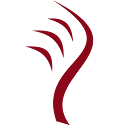Exceptions and State#
Control.App is primarily intended to make it easier to manage the common
cases of applications with exceptions and state. We can throw and catch
exceptions listed in the list of errors (the es parameter to App) and
introduce new global state.
Exceptions#
The List Error is a list of error types, which can be thrown and caught
using the functions below:
throw : HasErr err es => err -> App es a
catch : HasErr err es => App es a -> (err -> App es a) -> App es a
We can use throw and catch for some exception type err as
long as the exception type exists in the list of errors, es, as
checked by the HasErr predicate, also defined in Control.App
(Also, note that Exception is a synonym for HasErr):
data HasErr : Error -> List Error -> Type where
Here : HasErr e (e :: es)
There : HasErr e es -> HasErr e (e' :: es)
Exception : Error -> List Error -> Type
Exception = HasErr
Finally, we can introduce new exception types via handle, which runs a
block of code which might throw, handling any exceptions:
handle : App (err :: e) a ->
(onok : a -> App e b) ->
(onerr : err -> App e b) -> App e b
Adding State#
Applications will typically need to keep track of state, and we support
this primitively in App using a State type, defined in
Control.App:
data State : (tag : a) -> Type -> List Error -> Type
The tag is used purely to distinguish between different states,
and is not required at run-time, as explicitly stated in the types of
get and put, which are used to access and update a state:
get : (0 tag : _) -> State tag t e => App {l} e t
put : (0 tag : _) -> State tag t e => (1 val : t) -> App {l} e ()
These use an auto-implicit to pass around
a State with the relevant tag implicitly, so we refer
to states by tag alone. In helloCount earlier, we used an empty type
Counter as the tag:
data Counter : Type where -- complete definition
The list of errors e is used to ensure that
states are only usable in the list of errors in which they are introduced.
States are introduced using new:
new : t -> (1 p : State tag t e => App {l} e a) -> App {l} e a
Note that the type tells us new runs the program with the state
exactly once.
Rather than using State and Exception directly, however,
we typically use interfaces to constrain the operations which are allowed
in a list of errors. Internally, State is implemented via an
IORef, primarily for performance reasons.
